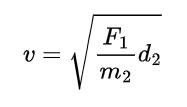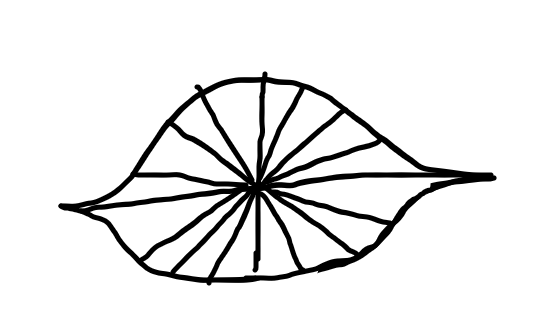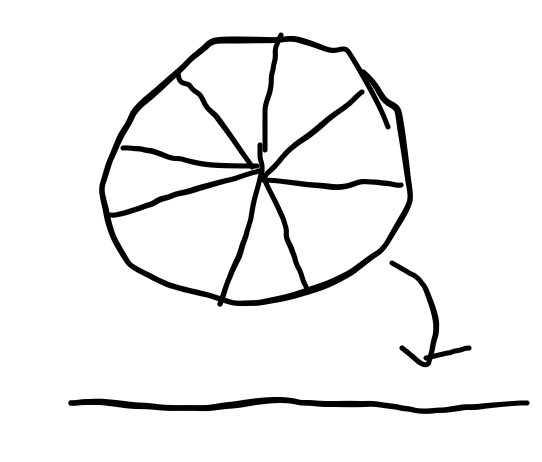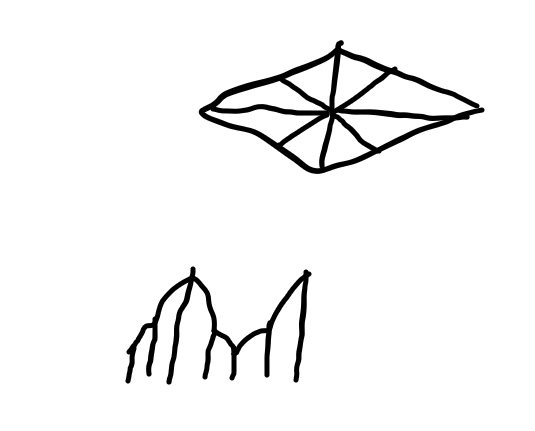-
Posts
207 -
Joined
-
Last visited
Content Type
Profiles
Forums
Events
Everything posted by grayson
-
Hello, I have tried many, many times to learn the Schrödinger equation. The only problem is that it seems you need to know the wave equation to solve for it. Can anyone help me? I meant the wave function, not wave equation btw
-
Yah, I was wondering about that.
-
So, I was playing around with SI units and came up with the equation in the picture. where v is velocity, F1 is the force exerted on an object, m2 is the mass of the object the force was asserted on and d2 is displacement. Let me go through how I came up with this. First, I broke down force into its base components. A newton is equal to one kg*m*s^-2. So, I divided it by kg to remove the kg on the top. We are now left with m*s^-2. This is almost velocity but not quite. So, I squared it, so it is now sqrt(m)*s^-1. I just multiplied it by m to get m/s. Just to avoid confusion, kg is weight, m is length and s is time. So, I put this into an equation and suddenly I got this. Basically, it is just velocity determined by force and weight and displacement. And because of newtons laws, the displacement should apply to both of the objects, so d2 is kind of unnecessary.
-
Imagine someone knocks on your door. What you know is that 2 hours ago, a higher being that knows about the future told you that in two up to four hours, a person will knock at your door and try to kill you. You have a gun in your hands and can shoot through the peephole. But you do not know if this is the person who will kill you or not. So, there are a few possibilities. Number one, you do not shoot, and they do not try to kill you. Number two, you do shoot but they are innocent, and you go to jail. Number three, you shoot, and they were trying to murder you, because as you shoot them you see a gun fall out of their pocket. Number four, you let them in, and they shoot you. Would you risk shooting, or risk in other ways not shooting? (Sorry if this is dark, but you are over there talking about a cat that has a chance of being dead, so idk if this is really the darkest thing ever).
-
I am going to ignore you not using common sense and explain what I meant. I mean the shape of multiple electrons. Like, how they form to show the shape of the subject.
-
I have recently come across a dilemma. I can't figure out how electron microscopes detect the shape of electrons. Now, obviously you could just send them through a wire or something, but that would make them lose their shape. I am trying to make an electron microscope for a project (As the ones you can get are too cheap). I have figured out everything except detecting the shape of the electrons. Can somebody help me?
-
okay bye
-
V1 = ((227e-18 + V0) / 𝛄) * s This is my equation for the increasing Volume of the universe. V1 is the Current Volume of the universe. V0 is the Last Volume of the universe. 227e-18 is the approximation of the Hubble Constant in m/s. 𝛄 is the Lorentz factor. This incorporates things like length contraction. s is the number of seconds. My brain did not brain, I am sorry. And I have improved it again V1 = ((227e-18 + V0) * s) / 𝛄
-
Hold on, I thought that V was volume. Anyways, I can change it. m1= ((227e-18 + m0) / 𝛄) * s When I say "Speed of the observer" I mean it is relative to the universe. Basically, why I added 𝛄 into there is because of length contraction. Because of length contraction, the universe should appear smaller to you, or at least things should appear closer to you. So when I say that, I mean relative to the universe's size, or just the universe as a whole. Hold on... I looked at the equations and V should be volume. Unless you do m (meters) but m is mass so idk
-
When you are talking about v, are you talking about V, or v (Volume or velocity). Because if v is velocity, than the only time v shows up is in the Lorentz factor, which is the speed of the observer. The 227e-18 is just an approximation of the speed of the expansion of the universe in m/s (meters per second). I don't know. I am up for criticism
-
(V1 = H0 + V0) / 𝛄 I got my order of operations wrong, does this work better? Hold on, I think I got this now... V1 = (227 * 10-18 + V0)/ 𝛄 Which happens every second or this V1 = ((227e-18 + V0) / 𝛄) / s Never mind, loopholes. Scratch that V1 = ((227e-18 + V0) / 𝛄) * s Do this instead
-
V1 = H0 + V0 / 𝛄 This is my equation for the increasing size of a closed universe. It is explaining that V1, or the velocity of the universe, is equal to V0, or the last velocity of the universe per second per megaparsec. The H0 is the Hubble constant, and the expansion of the universe. Gamma, is the Lorentz factor which is used in incorporating special relativity into the equation and using the laws of special relativity. I am open to criticism. Remember, this cannot be used on an open and infinite universe, it is only for a closed universe, which we do not know if our universe is or not.
-
When you say data preparation do you mean like natural language processing? I can't do that, but I can load in csv files, which can be made from spreadsheets. Plus, you dont have to name the x and y x and y, you can name them anything you want. So You can work with spreadsheets and visualise them in here, but not natural language processing.
-
Good question. The answer is I do not know yet. I am actively trying to figure this out tho UPDATE: I have made an algorithm! Here is how it works: First, you set an energy threshold. than it basically iterates over the x and y list and for each time that a thing appears, it appends that to x and y. (Which now that I think of it, it is just the x and y list) Than, it selects two things, best_x/y and cx/y. It calculates the accuracy by taking the absolute value of cyx - best_x/y. If the acuracy is under the threshold, it adds the cx/y to the last value of x/y. This is an algorithm, and while not the best, it does its job. The only problem is that it tends to only go to the top right and lower left. Idk why, but it works.
-
Update: I have not figured out the curves yet, but I have added dots in-between each line you plot so that you can keep track of where you plotted the lines. Before that, I tried adding 3d functionality but I couldn't figure out how to put it into my code. Another update: I made an algorithm for predicting the next value. It works pretty well, but not PRETTY well. I will show you it right now: enemy.mp4 Ignore the music. For some reason, it records the audio coming from my computer.
-
This data is not loaded from a csv. It was manually put in. And I am going to start working on the curve soon.
-
-
Wait, which countries use the period as a seperator? I do not know how to change that. I just used the csv module.
-
X,Y 5.0,1.0 5.0,2.0 5.0,3.0 That is how it stores the x and y values. That is an example from one of the csv files I saved.
-
Okay, update. You can now save and load csv files in the program. I cannot show the video, as it is too big of a file, but yah. Pretty cool And yes, it does let you enter data. The way it works, is that you add numbers into the input boxes and then when you press add point it converts the StringVar (A tkinter specific variable type) into a float and than you have to work from there by pressing plot.
-
Thank you very much!
-
Hello, as much of you have degrees and some are even real scientists, I have a question. Do you often work with analytics? And if so, how do you think any analytics software could improve. so far, I have made a very basic plotting software. What do you think it should have more? THIS IS NOT AN ADVERTISEMENT! IT HAS NOT EVEN RELEASED AND MIGHT JUST BE A DRAFT!
-
Hello everyone. After seeing @swansonts post about antimatter falling like matter, I thought of something. How would they fall without "Anti-Gravitons". Now I know that gravitons are still hypothetical, but if they are real, wouldn't an anti-particle just destroy itself upon collision with a graviton. So, what if there was an "Anti-graviton" That pulled it down? Or what if the normal gravitons quite literally aren't matter or antimatter? Maybe that is why we cannot detect them if they are real... Also, another thing to think about, maybe the reason gravitons are so hard to detect is because they pass through things like neutrinos. I am not stupid; I am just not very expertise in quantum physics. Anyways, if there is another celestial body of evidence that I am not correct, just lay it down on me. Have a great day!
-
Hello, I am back after a while. I will no longer post crap. Anyways, back to the question. Is there a way I can turn magnesium powder into magnesium paste without chemically changing it? Thank you
-
Hello guys. You know about the "find a shape that can roll over any surface" thingy? Well, I have found a way to do that sketch on your paper! You see, all you have to do is find the radius of every time it majorly changes and evenly distribute it in EVEN numbers! Let me give you a visual presentation: As you see, we calculate the radius every time it significantly changes. Unfortunately, this is not a practical method, so we will have to sort of, draw the curve on the road. Let me give you another example As you see, the circle is the easiest to do, as its radius is never-changing therefore the surface is never-changing. Lets look at something else As you can see, this rhombus is not cool, He needs a different surface to run smoothly on. You can also reverse engineer this method. And you can do this with any shape!









